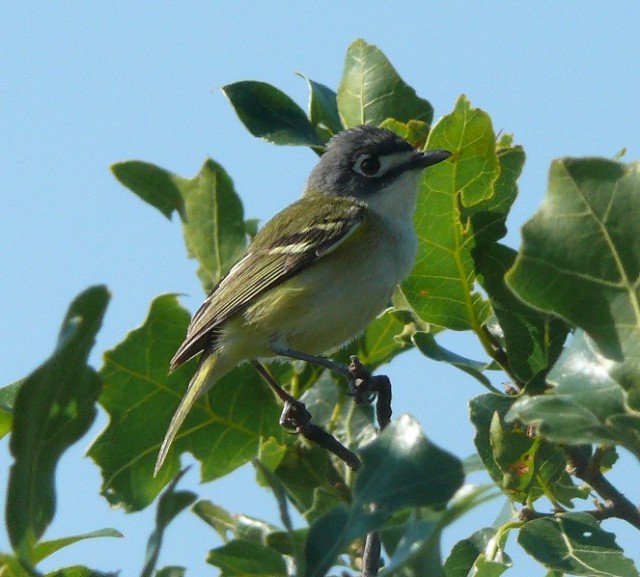FORT SILL, Okla.--Since military bases have some very well managed habitats, most of them have their share of endangered species.
Fort Sill is no different. The 93,000 acres of Fort Sill and the 55,000 acres of the Wichita Mountains Wildlife Refuge are just about all the native habitat left in Southwest Oklahoma. Much of the rest is used for ranching, farming or housing. This makes Fort Sill an ideal place for many species of wildlife that don't survive well in the surrounding area, but the one species that is classified as endangered is the Black-capped Vireo.
It's a small bird which normally visits Fort Sill between March and September each year. In this timeframe they will find a mate, build a nest and attempt to raise young, but it's not easy when the cards are stacked against you.
In this case, the Brownheaded Cowbird is the villain which makes it extremely difficult for our Black-capped Vireo to hatch and raise their young. Brown-headed Cowbirds, being a larger bird, has developed a way of assuring its own survival by laying its eggs in other birds nest.
It is quite a racket this cowbird has going, because its young have the ability to push out the smaller young of many other species.
Then the nest building parents raise the cowbirds' young.
We have a biological agreement with the Fish and Wildlife Service that describes the practices Fort Sill will follow to aid the little Vireo.These practices are very similar to the efforts on the wildlife refuge, and we can work to help each other.
The best part of the agreement is that the practices don't have an impact on Fort Sill training. We work Brown-headed Cowbird traps to remove cowbirds, don't train with heavy equipment in the mountains where the vireo nests, and work to suppress excessive fires in the nesting area. Since heavy equipment doesn't do well in the rocky areas of the mountains, none of these really affect training.
We've annually monitored the Black-capped Vireo on Fort Sill since 1989, when there were only eight known territories. The latest report we have from monitoring shows the population is more than 600. The population of vireos on the refuge has grown to even higher numbers.
This shows that our management efforts have met with much success. Black-capped Vireos and the Army mission are not only surviving, but actually prospering together.
With continued protection it is our hope that some day this little Vireo will be taken off the endangered species list and become another success story.
Another endangered species that may occasionally pass through Fort sill is the Whooping Crane. They are perhaps the best known endangered species in North America and have been reported to pass over this area during migration. They have not actually been seen on Fort Sill recently, so we have no management plans for them.
To send questions or comments to me please e-mail fscms@conus.army.mil, or you can mail your comments to Commander, USAG-Fort Sill, 462 Hamilton Road, Suite 120, Fort Sill OK 73503. Thanks and have a great Fort Sill day.


Social Sharing